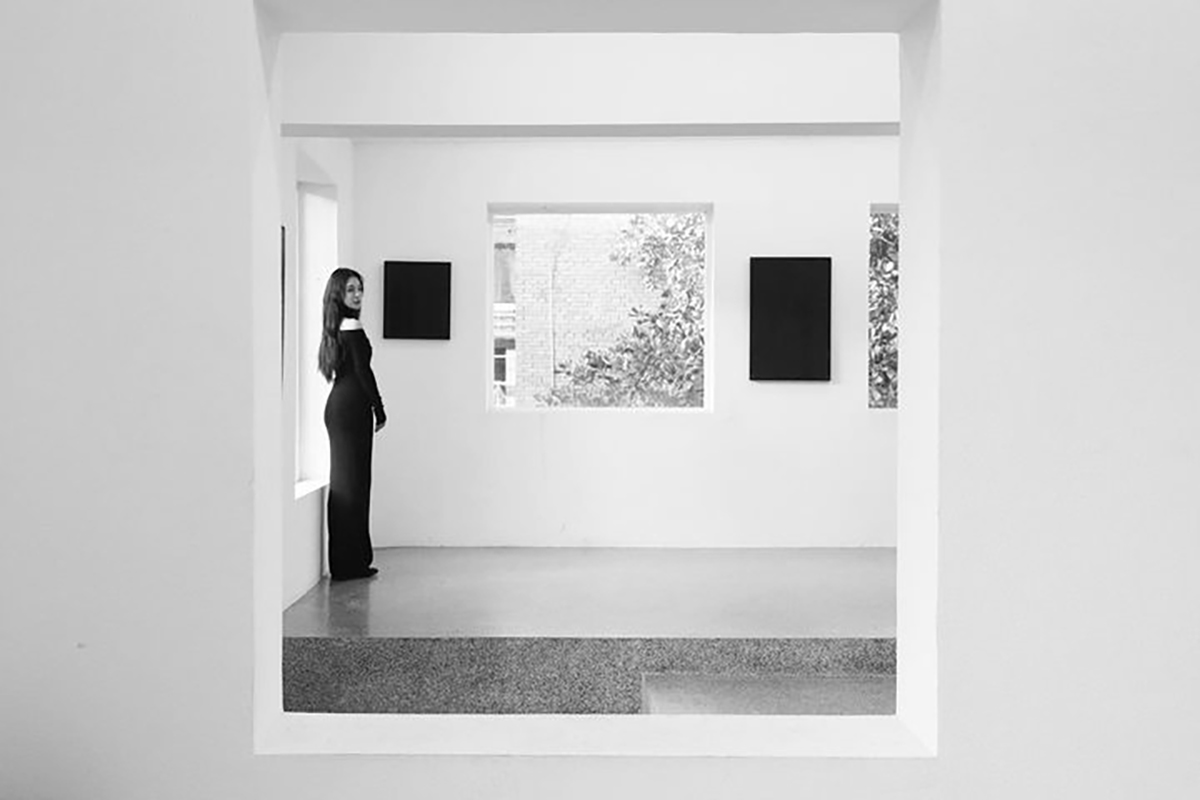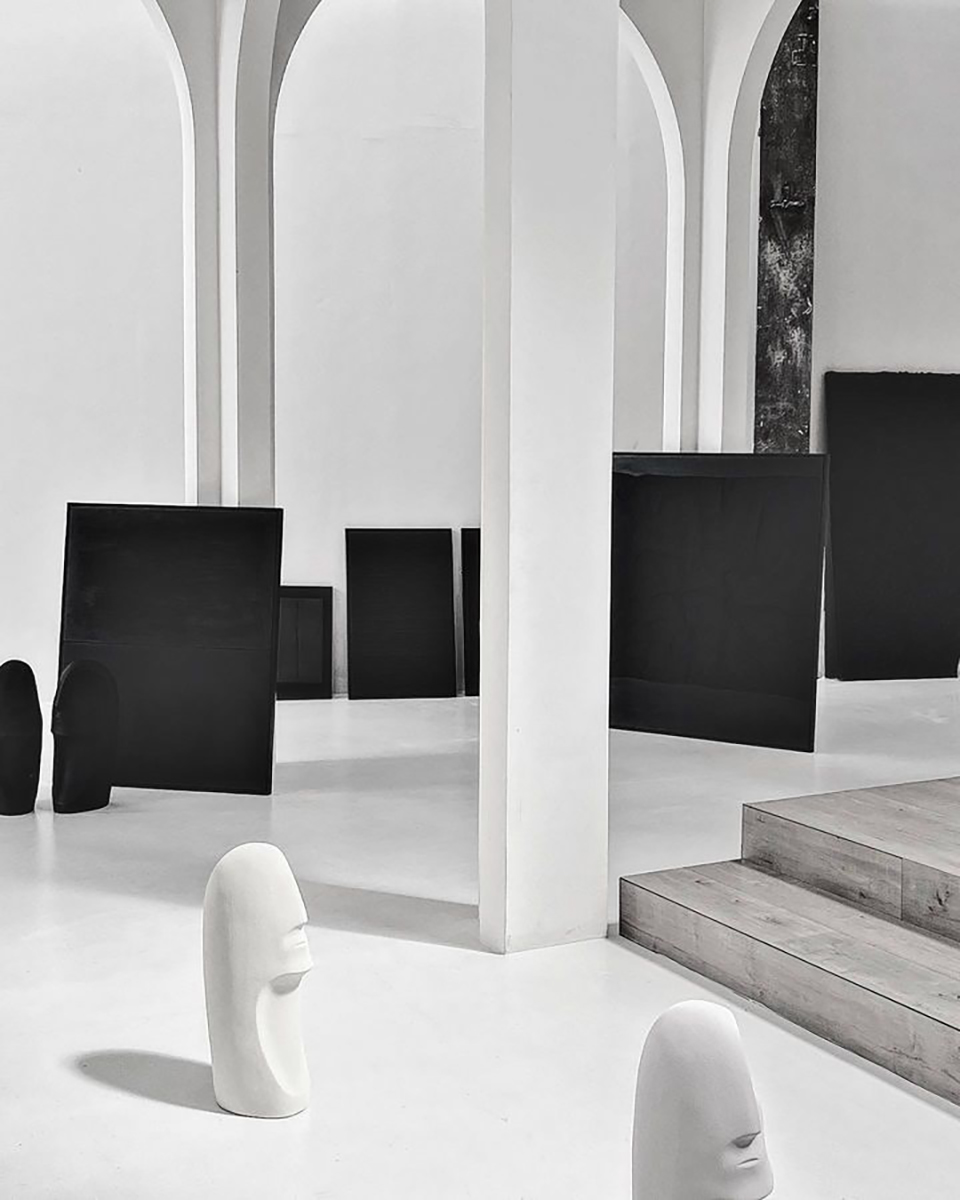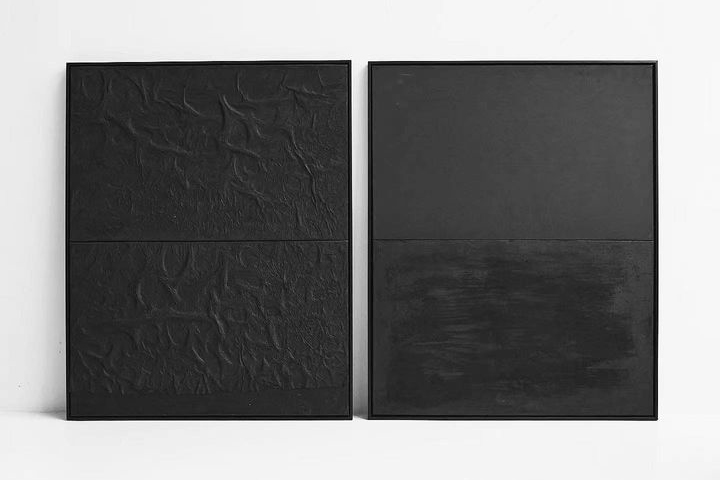10 Questions for the artist: RaFOO

First of all, introduce yourself to our readers. Who is RaFOO in three words?
Kindness, Wisdom and Sensitivity
You have a background in architecture; how does it influence your work as an artist?
I am an architect who fled the city. In my works, I convey the atmosphere, vibrations and power of the northern nature. With my art, I want to show people how important it is to love yourself and this world, always follow the call of your heart and have constant contact with nature. Strong in spirit, following the call of the heart, free as the north wind!
For me personally, painting is very similar to architectural and music. One of the most impressive things about Bach's music is that it is "architectural", its construction looks clear. Tones are not only related to colours, but also writing and painting, to indulge oneself in a project, and spark a process of creativity… Concentration on the essentials is both in architecture and in painting of great importance.
What are the differences and similarities between your work as an architect and your art practice?
Whenever I think about architecture, various images come to my mind. Many of these images are related to my training and practice as an architect. They contain the architectural expertise I have accumulated over the years, while others come from my childhood memories, from my writing experiences. There was a time when I could feel architecture without thinking about it. This is the treasure I received when I worked as an architect. Nowadays, when I am working on my art creation, I find myself frequently falling into some vague and long-ago memories. I recall what these situations really looked like, what they really meant to me, and finally present them on the screen. Even though I can't sketch out any particular form, everything is very obscure and uncertain - creations become extremely important in this - creation is the art of using individual parts to create a meaningful whole.
You work with different mediums, such as paintings, ceramics, paper, and site-specific installations.
What is your philosophy to combine these different mediums?
A large part of my deep fascination with art stems from creative experiments and discoveries. Mottled or smooth paper, acetate fiber, linen, clay, or resin... There is a countless variety of mediums that can be used for painting or as paintings, they have endless variations. The works range from images with a rough surface like stoneware to representations of nature, air, clouds, waves, and mountains. They are united under the colour 'black'. They are imbued with energy: quietness, wildness, or boldness. I like to explore this energy. For example, in my Moon Cloud series, the fibers of the paper are altered to create subtle reliefs, and brushstrokes like paintings. Made from the inner bark of the wikstroemia, Dongba paper is rich in fibers that would loosen when mixed with water. Once altered, it would be fixed with gesso and glue. In some cases, I also attach special materials such as organic toner, glass baking paint, and stiffener to the surface to express a richer texture as well as a sculpture-like touch.

In your statement, you speak of "a consistent style of habitual construction”.
What do you mean by that? And how do you use this language in your work?
My works are faint, delicate, and subtle, without a strong paradigm. They are like a 'walk', united under the colour 'black'. I don't want the audience to be guided by any specific graphics, but only to give them an emotion, an atmosphere. I hope they will think, imagine and look for their own answers. A person who says "I know", who says "what exists" or "what doesn't exist", has obviously stopped thinking and stopped following the whole process of looking for desire. The biggest problem we have today is that we are bound by our beliefs, we are overwhelmed by knowledge. Our minds should be freed from yesterday, freed from faith, and freed from authority. My process of creating is also like a wander, not knowing where the end is. I often work on five or six paintings at the same time in my studio, adding something to my work according to my moods each day, the atmosphere of the studio, and the materials at hand. I seek 'simple complexity'. Till one day I think I have reached the end of this work, then I will go back or start again. It is like a walk in the night, with the moon shining enchantingly, and the soft stars casting autumn waves on the anxious, hurrying pedestrians. When the night comes, all is quiet and the stroller breathes in the fresh, sweet air greedily. Pause, start again, and continue wandering, with bright or dark thoughts, with blue sky or night sky, sunrise or bright moon overhead, sometimes sad, sometimes smiling…
A key element in your production is paper. What does this material represent for you?
I am always looking for material that expresses myself, and I hope that this material will have some connections with my own personality... This is one of the reasons why I finally chose paper as a raw material to play an important role in my work. For example, the seemingly soft Dongba paper is the toughest of all, with a certain self-protective toxicity beneath its beautiful surface and it can be stored for 800 to 1000 years. This temporal, beautiful, unintended, free, abundant, strong, soft, and multi-faceted ...... diversity is what I am looking for. It is said that the work and the artist are of the same origin mutually, and my work certainly needs to convey my attitude towards life, and my philosophical thinking, "my work is the representation of myself". The expression of content is not directly related to the material itself, but the more important thing is thinking. It is all based on ideas and past experiences that shape my behaviour. We are often in a space of unnatural neutrality, accustomed to getting by and being confused about everything. To escape this dilemma, I am learning to perceive and feel, to seek pureness and unique expressions - love and hate, brightness and darkness, anxiety and detachment - so that I can feel that I'm real and embrace the beauty of life.
Speaking of themes, Your work reflects on personal memory, "shows transience and impermanence".
How much do personal experiences influence your practice and the themes you work with?
Human beings are born to create utopia.
The value of a man is to constantly anticipate, and strive to achieve a part of the vision. One of the most important reasons why art can be above science is that only art can realize this vision, which is the "imagination" given by the artist, not just to create beauty or to show beauty, but to inspire your free spirit.
My work never seeks to depict objects that actually exist, they have no reference because I do not want to bind the viewer through images. Although it is not possible to completely leave behind personal experience, I try my best to really engage with it, without giving any signals, by envisioning and entering the context ...... This context is not limited, even though we are still not able to totally let go of our beliefs, perceptions, and egos, each viewer will get a very personal perception because of his or her different background, experience, knowledge, sensitivity, and so on. This is invaluable because there won't be any perception, without a process of thinking.
I, on the other hand, only described a painting. If we know ourselves moment by moment, without accumulating anything, we can see how calmness emerges. It is not a product of the mind. It is not an imagination or a result of intentional formation; it is only in that calmness that creation can take place.

"Moon Clouds II" by RaFOO"
You have a particular colour palette of black and composition preferences. What is your creative process like?
Can you walk us through the realization of one of your works from start to finish?
The process of creating art is supposed to be mysterious, and it is supposed to be unreplicable even by the artist himself. In my 'wandering' process, it is true that I cannot reproduce any of my works either, as each piece is the result of an unconscious, experimental, and random process. The colour black has no particular aesthetic value, "without art theory, black paint would be just black paint and nothing more." In my case, black is not only a colour, but also a distinctive emotional and spiritual experience. It contains the complete grasp of experience, the extraction of philosophical awareness, the construction of a language space, and the imagination of integrating everything with art eventually ...... Black can symbolize the infinity of space, the passage of time, and the impermanence of life. Using black as a dominant colour, and combining it with natural textures and density creates a unique atmosphere. This atmosphere is often very mysterious and obscure but at the same time full of power and energy. Sunlight, solitude, nature, love, time, and creation itself are all brought into my work and presented to you. The black-based creations not only show beauty and mystery but also an exploration and reflection of the human existence and spiritual world. Works that are unique, full of depth, and symbolic meaning were created.
You already have a long and successful career. What do you think of the art community and market?
Not only did I have a long career, but I am also attending an EMBA course. In my opinion, the art community and the market are two very broad concepts. Though it is not necessary for artists to cater to the market's preferences and it is more important to stick to their own style, they should be clear about the future value of their creations in the market and the path to take to sell their works. That is what many people are talking about nowadays, namely personal art IP building. For example, if you are an illustrator, then you should work more with commercial brands to make your art as marketable as possible; if you are an artist in a popular style, then you can participate in more art community activities to increase your visibility and make your works sell in bulk; if the artist creates an inherently elegant and niche style, then he should cherish his reputation and follow the collector's route ...... In short, art is also business, and artists shouldn’t change their style in the way of creation. Try to find your own style at the beginning and achieve a circle of business.

"Moon Clouds I" by RaFOO"
Lastly, what are you working on now? Do you have any new projects you would like to share with our readers?
This April I will be in Paris for the SINO FRANCAISE D'ECHANGE D'ART event at the Musée du Louvre, and then I will post a video project on my personal account for about 2 months of travelling around art galleries in Europe.
From my perspective, my work is not at all similar to Pierre Soulages. For example, can you say that a person wearing Issey Miyake is similar with a person wearing a black cheongsam? I like Pierre Soulages' work very much. It always gives me a sense of shock and power, like a strong light that illuminates everything in its path. My works, on the other hand, are more subtle and delicate, without a strong paradigm. They are like a " wander ". The moon is enchanting on the walk, and the soft stars casting autumn waves on the anxious, hurrying pedestrians. As the night draws in, everything is quiet, and the stroller breathes in the fresh, sweet air greed. Pierre Soulages writes a long masterpiece, while I write prose poetry.
I can't say what specific influences have been brought to me by specific people; the mind is a product of time. Ideas are built on yesterday or on the past. My upbringing, my experience as an architect, every text I've read, every work of art I've seen, every trip I've taken in life, every time I get drunk, and every time I cry, have all had an impact on my artistic path. "Identify with a greater thing and the ego disappears." Identification is the process of the ego. That greater thing is just a projection of the ego, which I experience and thus strengthens myself.
You can find out more on the artist Instagram.